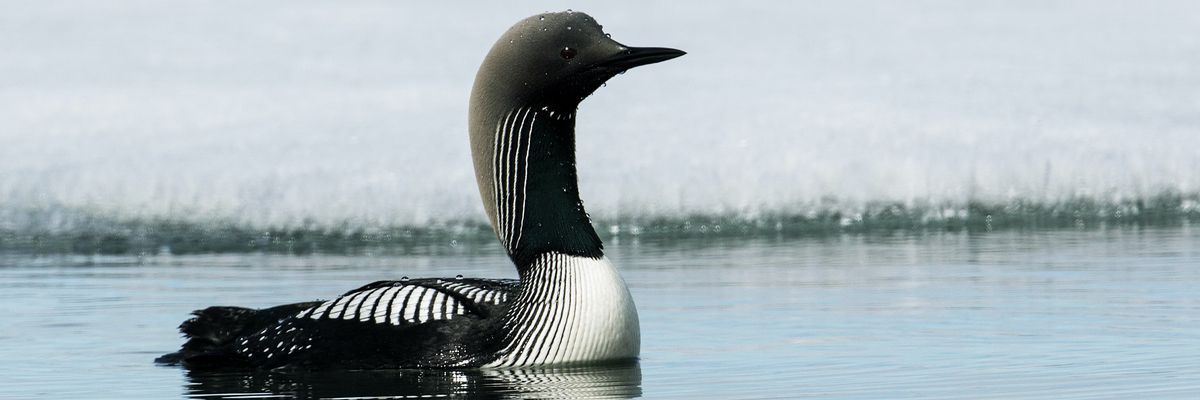"In the face of current uncertainty, to protect migratory birds, the U.S. government should ensure the most important bird areas continue to be set aside," the co-author of a new study asserted.

This Pacific loon was photographed in Alaska's North Slope on July 8, 2018.
(Photo: Nick Athanas/flickr/cc)
BRETT WILKINS
May 02, 2023
Migratory bird nest survival "decreased significantly" near fossil fuel extraction sites in Alaska's Prudhoe Bay, a study led by the Wildlife Conservation Society revealed Tuesday.
WCS analyzed 17 years of migratory bird nesting data in Prudhoe Bay and found that "nest survival decreased significantly near high-use oil and gas infrastructure and its related noise, dust, traffic, air pollution, and other disturbances."
"Prudhoe Bay is the site of intensive energy development and is located on the Arctic Coastal Plain, one of the most important avian breeding grounds in the world," WCS noted. "Millions of birds nest here, with some then migrating through every state in the nation to wintering grounds in Central and South America, even Africa, with others crossing the Pacific Ocean to Russia, China, Japan, Australia, New Zealand, and Antarctica."
According to the study, which was published in the Journal of Avian Biology:
The Arctic Coastal Plain is one of the most important avian breeding grounds in the world; however, many species are in decline. Arctic-breeding birds contend with short breeding seasons, harsh climatic conditions, and now, rapidly changing, variable, and unpredictable environmental conditions caused by climate change. Additionally, those breeding in industrial areas may be impacted by human activities. It is difficult to separate the impacts of industrial development and climate change; however, long-term datasets can help show patterns over time.
We evaluated factors influencing reproductive parameters of breeding birds at Prudhoe Bay, Alaska, 2003–2019, by monitoring 1,265 shorebird nests, 378 passerine nests, and 231 waterfowl nests. We found that nest survival decreased significantly nearer high-use infrastructure for all guilds. Temporally, passerine nest survival declined across the 17 years of the study, while there was no significant evidence of change in their nest density. Shorebird nest survival did not vary significantly across years, nor did nest density. Waterfowl nest density increased over the course of the study, but we could not estimate nest survival in all years.
"Tundra-breeding birds contend with short breeding seasons, harsh climatic conditions, and now, rapidly changing, variable, and unpredictable environmental conditions caused by climate change," Martin Robards, regional director of WCS' Arctic Beringia Program and an author of the study, said in a statement.
"Additionally, as we demonstrate here, those breeding in industrial areas are impacted by human activities too," Robards added. "The urgency to better understand these relationships and mitigate impacts cannot be expressed strongly enough, given widely acknowledged declines in these species [and] our national and global obligations to protect migratory birds."
WCS said that "factors associated with industrial development that may directly or indirectly affect nesting include: habitat degradation via hydrology alteration and road dust, vehicle and aircraft traffic, noise, air pollution, and increased nest predator populations associated with development, including glaucous gulls, ravens, Arctic fox, and other species."
The study comes two weeks after the Biden administration approved the Willow Project, an $8 billion oil drilling project on federal lands in Alaska's largest remaining unspoiled wilderness, as well as the Alaska LNG Project, which the Department of Energy admits will unleash 10 times the greenhouse emissions of Willow.
No comments:
Post a Comment